Australia accuses Iran of directing anti-Semitic attacks, expels envoy

DEVELOPING STORYDEVELOPING STORY, Prime Minister Anthony Albanese says Australia will also designate the IRGC as a ‘terrorist entity’. Australian Prime Minister Anthony Albanese has accused Iran of directing at least two anti-Jewish attacks in his country and announced plans to expel Iran’s ambassador to Canberra. Speaking to reporters in the Australian capital on Tuesday, Albanese described the attacks as attempts to undermine social cohesion and sow discord in Australia. “It is totally unacceptable, and the Australian government is taking strong and decisive action,” he said. “A short time ago, we informed the Iranian ambassador to Australia that he will be expelled.” The prime minister said Australia has also suspended operations at its embassy in the Iranian capital, Tehran, and moved all of its diplomats to a third country. “I can also announce the government will legislate to list Iran’s Revolutionary Guard Corps, the IRGC, as a terrorist organisation,” he added. Australian Minister for Foreign Affairs Penny Wong said the Iranian ambassador, Ahmad Sadeghi, and three of his colleagues have been declared persona non grata and given seven days to leave the country. She said the move marked the first time that Australia has expelled an ambassador since World War II and that the country has also withdrawn its envoy to Tehran. Still, the Albanese government will maintain some diplomatic lines with Iran to advance Canberra’s interests, Wong said, advising Australians in the Middle Eastern country to return home. She also warned Australians considering travelling to Iran to refrain from doing so. More soon. Adblock test (Why?)
Trump to South Korea’s Lee: ‘Look forward’ to meeting N Korea’s Kim Jong Un
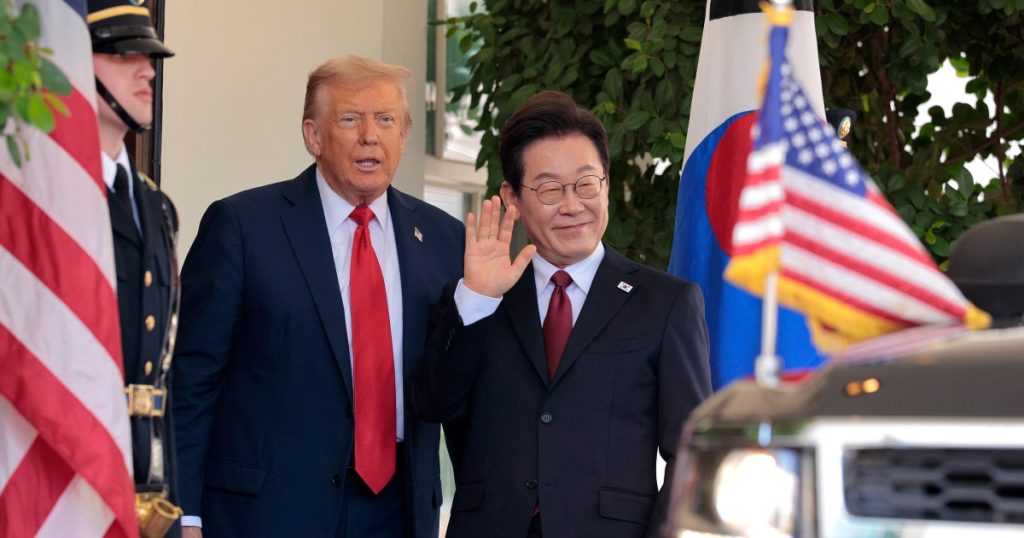
In White House meeting with Lee, Trump also says US should have ownership of land housing US military base in South Korea. United States President Donald Trump and South Korean President Lee Jae-myung have expressed their willingness to engage with North Korea’s hereditary leader, Kim Jong Un, during a meeting at the White House. Lee, who has promised to “heal the wounds of division and war” as South Korea’s new president, told the US leader on Monday that his North Korean counterpart “will be waiting” to meet him. “I hope you can bring peace to the Korean Peninsula, the only divided nation in the world, so that you can meet with Kim Jong Un”, and “build a Trump Tower in North Korea so that I can play golf there”, Lee said, speaking in Korean. Trump, who has met with Kim on three past occasions, told reporters in the Oval Office that he hopes to meet the North Korean leader again this year. “Someday, I’ll see him. I look forward to seeing him. He was very good with me,” Trump said, adding that he knew Kim “better than anybody, almost, other than his sister”. During his meeting with the South Korean president, Trump also said the US should have ownership of South Korean land where some 28,500 American troops are stationed in US military bases. “We spent a lot of money building a fort, and there was a contribution made by South Korea, but I would like to see if we could get rid of the lease and get ownership of the land where we have a massive military base,” Trump said. This was Lee’s first visit to the White House after he was elected in June following the impeachment of former President Yoon Suk-yeol, who briefly imposed martial law late last year in a move swiftly overturned by lawmakers and which has led to his arrest on alleged insurrection charges. Advertisement Since taking office, Lee has publicly made efforts to improve South Korea’s relationship with its northern neighbour. But Pyongyang has so far rebuffed the diplomatic overtures. Last week, Lee said he would seek to restore the so-called September 19 Military Agreement, signed at an inter-Korean summit in 2018, suspending military activity along South Korea’s border with North Korea as part of an effort to rebuild trust. Lee’s announcement was met with criticism from North Korea, which noted that it came as South Korea embarked on joint military drills with the United States. North Korean state media said that the drills proved Washington’s intention to “occupy” the entire Korean Peninsula . “If they continuously persist in the military rehearsal, they will certainly face up the unpleasant situation and pay a dear price,” Kim Yong Bok, first vice-chief of the General Staff of the Korean People’s Army, was cited by North Korean state media KCNA as saying. ‘A raid on churches’ Hours before Lee arrived at the White House, Trump took to social media to denounce what he described as “a Purge or Revolution” in South Korea. “WHAT IS GOING ON IN SOUTH KOREA? Seems like a Purge or Revolution. We can’t have that and do business there,” Trump wrote on his Truth Social platform. Asked about his post during his meeting with Lee, Trump said, “I am sure it’s a misunderstanding, but there’s a rumour going around about raiding churches … I did hear that from intel.” Last month, South Korean Special Prosecutor Min Joong-ki’s team raided Unification Church facilities and officials linked with the religious sect, while “investigating various allegations involving former first lady Kim Keon Hee”, South Korea’s official Yonhap News Agency said. Seoul police also raided Sarang Jeil Church, headed by evangelical preacher Jun Kwang-hoon, who led protests in support of the removed President Yoon. The police have also investigated pro-Yoon activists who stormed a court in late January after it extended Yoon’s detention, and in July, special prosecutors investigating the declaration of martial law served a search warrant on the Korean part of a military base jointly operated with the US. Adblock test (Why?)
Trump bans burning of US flag in defiance of constitutional protections
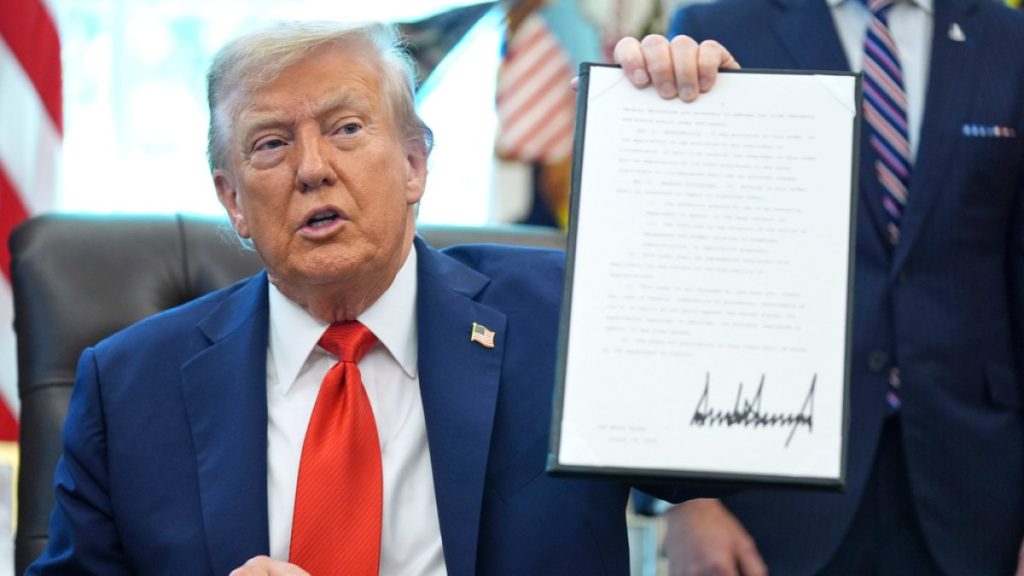
The US Supreme Court ruling says flag burning is an expression protected under the First Amendment of the Constitution. United States President Donald Trump has signed an executive order punishing those who burn the country’s flag with one year in jail, despite a longstanding court ruling that flag burning is protected by the First Amendment of the Constitution. The order, signed on Monday, acknowledges the 1989 Supreme Court decision, which found that flag burning is protected as free speech, but argued that it is “likely to incite imminent lawless action”. “If you burn a flag, you get one year in jail; no early exits, no nothing,” Trump said as he signed the order. “You get one year in jail, and it goes on your record, and you will see flag burning stopping immediately,” he added. The move has been condemned by free speech groups who say that the order violates key civil liberties, as Trump pursues a vision of executive power with few constraints. “President Trump may believe he has the power to revise the First Amendment with the stroke of a pen, but he doesn’t,” the free speech advocacy group FIRE said in a statement. “The government can’t prosecute protected expressive activity — even if many Americans, including the president, find it ‘uniquely offensive and provocative’,” it added. Monday’s executive order calls on Attorney General Pam Bondi to prosecute those involved in flag burning to the “fullest extent possible”. The order claims without evidence that flag burning is being used by foreign nationals to intimidate and threaten Americans. The order also threatens visa revocation, deportation and more for foreign nationals who do so. Advertisement The order says that flag burning is tantamount to “incitement” or “fighting words”, with Trump saying that flag burning “incites riots at levels we’ve never seen before”. There is no evidence for this claim, which has been dismissed by legal experts. “I don’t think this is something that has been a big problem,” GS Hans, a law professor at Cornell University who focuses on the First Amendment, told the Associated Press news agency. “It’s a solution in search of a problem.” Adblock test (Why?)
Trump orders removal of Fed governor Cook over mortgage fraud claims

United President Donald Trump has ordered the removal of Federal Reserve governor Lisa Cook amid unproven claims of mortgage fraud, an unprecedented move that immediately raised fears for the central bank’s independence. In a letter posted on social media on Monday night, Trump said Cook, one of the seven members of the Fed’s Board of Governors, was being sacked “effective immediately” in accordance with his powers under the US Constitution and the 1913 Federal Reserve Act. Citing claims aired last week by US federal mortgage regulator, Trump said there was “sufficient reason to believe you may have made false statements on one or more mortgage agreements”. “The Federal Reserve has tremendous responsibility for setting interest rates and regulating reserve and members banks,” Trump said in the letter, which was shared on his platform Truth Social. “The American people must be able to have full confidence in the honesty of the members entrusted with setting policy and overseeing the Federal Reserve. In light of your deceitful and potentially criminal conduct in a financial matter, they cannot and I do not have such confidence in your integrity.” “At a minimum, the conduct that issue exhibits the sort of gross negligence in financial transactions that calls into question your competence and trustworthiness as a financial regulator,” Trump added. Trump had on Friday threatened to fire Cook, a former Michigan State University professor who was appointed by former President Joe Biden, if she did not resign. Advertisement In response to inquiries by Al Jazeera, a spokesperson for the Federal Reserve said the bank had no comment at the moment but would “keep you posted”. Trump’s extraordinary move is set to raise further questions about the independence of the US central bank, which has been under intense pressure from the president to lower interest rates. The ability of the Fed to set interest rates, which affects the cost of borrowing for consumers and businesses, without being subject to political interference is widely considered a key plank of confidence in the US economy. The removal of Cook could also set off a series of protracted legal challenges. “In all likelihood – because of the stakes involved and the absence of relevant case law in this area – it will be challenged in court,” David Wilcox, a senior fellow at the Peterson Institute for International Economics who served on the staff of the Federal Reserve Board, told Al Jazeera. “Unfortunately, that process will probably be lengthy – perhaps running for many months.” “In the meantime, investors are immediately facing the reality that the latitude of the Fed to conduct monetary policy in relentless pursuit of price stability and maximum employment may not be as great as they thought yesterday,” Wilcox added. “The damage done to confidence in the US system will not be easily or quickly repaired.” Under the Federal Reserve Act and US Supreme Court precedent, the president must demonstrate “cause”, widely interpreted to mean malfeasance, to fire any of the central bank’s seven governors. In a letter addressed to US Attorney General Pam Bondi and Department of Justice official Ed Martin earlier this month, Federal Housing Finance Agency director Bill Pulte, a staunch Trump ally, alleged that Cook had listed two properties as her primary home addresses. In the letter, shared on social media, Pulte said that Cook appeared to have “falsified bank documents and property records to acquire more favourable loan terms, potentially committing mortgage fraud under the criminal statute”. Mortgage loans for primary residences typically have lower interest rates as they are considered lower risk than those for investment properties. In response to Pulte’s letter, Cook said last week that she would gather information about her financial history “to answer any legitimate questions and provide the facts”, but added that she had “no intention of being bullied to step down from my position because of some questions raised in a tweet”. Adblock test (Why?)
Irish activists knit blanket representing children killed in Gaza
[unable to retrieve full-text content] Video shows a blanket knitted by Irish activists as a tribute to children killed in Gaza. Each square of the blanket rep
Al Jazeera journalist killed in Israeli attack on Nasser hospital in Gaza
[unable to retrieve full-text content] An Al Jazeera journalist is among 15 Palestinians killed in an Israeli attack on the Nasser hospital in Gaza.
Vietnam prepares to evacuate half a million people ahead of Typhoon Kajiki
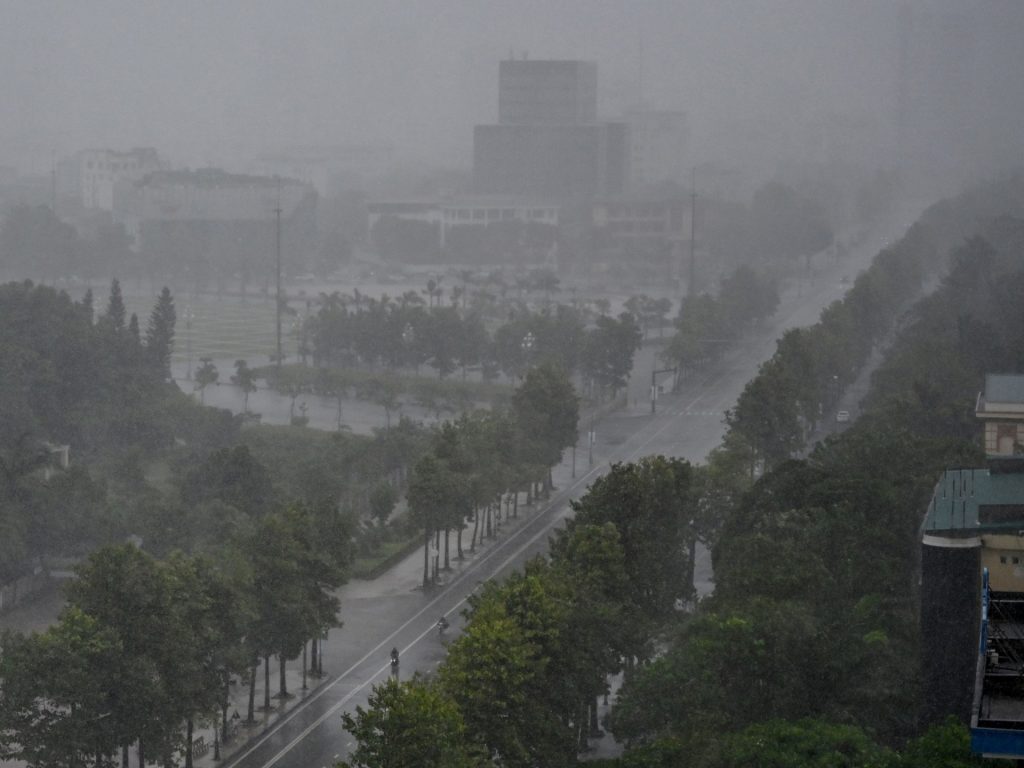
More than 16,500 soldiers and 107,000 paramilitary personnel have been mobilised to help with the evacuation. Tens of thousands of people have been ordered to evacuate from Vietnam’s coastline facing the South China Sea, with airports and schools shut as authorities brace for Typhoon Kajiki. The Vietnamese government said on Monday that about 30,000 people had been evacuated from coastal areas. Authorities said on Sunday that more than half a million people would be evacuated and ordered boats to remain in port. “This is an extremely dangerous fast-moving storm,” the government said in a statement on Sunday night, warning that Kajiki would bring heavy rains, flooding and landslides. More than 16,500 soldiers and 107,000 paramilitary personnel have been mobilised to help with the evacuation and to stand by for search and rescue, the government said in a statement. The typhoon with winds of up to 166km/h (103mph) at sea is due to make landfall on Monday afternoon, the country’s weather agency said. The Joint Typhoon Warning Center said conditions suggested “an approaching weakening trend as the system approaches the continental shelf of the Gulf of Tonkin where there is less ocean heat content”. Two airports in the Thanh Hoa and Quang Binh provinces have been closed, according to the Civil Aviation Authority of Vietnam. Vietnam Airlines and Vietjet Air cancelled dozens of flights to and from the area on Sunday and Monday. Coastal provinces have banned ships from going out to sea starting Monday and were calling in those already out, said Vietnam’s news agency. Vietnam is prone to storms that are often deadly and trigger dangerous flooding and mudslides. More than 100 people were killed or went missing due to natural disasters in the first seven months of 2025, according to the Ministry of Agriculture. Advertisement Last year, Typhoon Yagi killed about 300 people and caused property damage of approximately $3.3bn. ‘A bit scared’ The waterfront city of Vinh was deluged overnight, its streets largely deserted by morning with most shops and restaurants closed as residents and business owners sandbagged their property entrances. “I have never heard of a typhoon of this big scale coming to our city,” 66-year-old Le Manh Tung, in the city of Vinh, told the AFP news agency. He is sheltering alongside other evacuated families at an indoor stadium. “I am a bit scared, but then we have to accept it because it’s nature – we cannot do anything.” Houses run the risk of collapse from the storm, and even high-rise buildings could suffer serious damage, said Deputy Prime Minister Tran Hong Ha, the official Vietnam News Agency reported. The storm is projected to move inland across Laos and northern Thailand. Kajiki hit the southern coast of China’s Hainan Island on Sunday as it moved towards Vietnam. About 20,000 residents were evacuated from the Chinese province, which downgraded its typhoon and emergency response alerts on Monday morning. But authorities warned of heavy rain and isolated storms in cities in the southern part of the province. Adblock test (Why?)
South Korea’s Lee set to meet Trump, with trade and security high on agenda
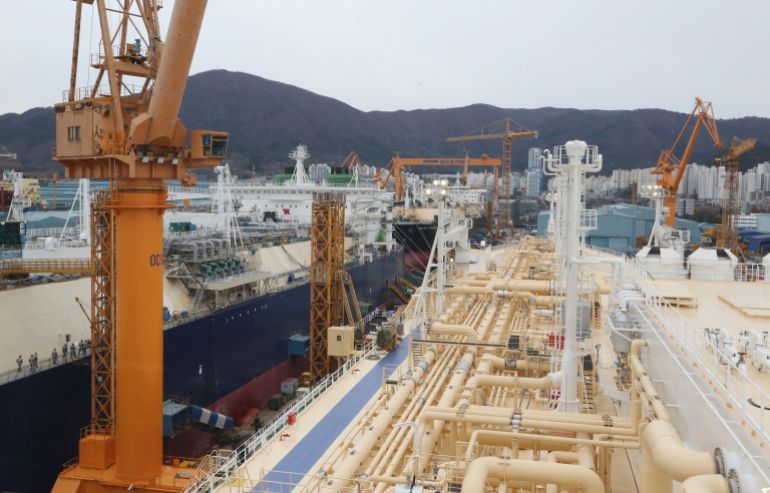
Seoul, South Korea – South Korean President Lee Jae-myung is set to meet United States President Donald Trump for the first time in a high-stakes visit to his country’s closest and most important ally. After a one-day meeting with Japanese Prime Minister Shigeru Ishiba in Tokyo, Lee arrived in Washington, DC, on Sunday ahead of an official working-level meeting at the White House with Trump. It will be the first time the two heads of state meet. Their summit follows a trade deal in July in which Washington agreed to cut its reciprocal tariff on South Korea to 15 percent from an initially proposed 25 percent. The meeting is crucial for South Korea, whose engagement with the Trump administration was disrupted by domestic political turmoil, ignited by the brief declaration of martial law announced in December by the country’s impeached former president, Yoon Suk-yeol. Discussion will focus on ironing out details of the unwritten July trade deal, which involves South Korea agreeing to buy $100bn in US energy and invest $350bn in the US economy. On top of those dizzying sums are direct investments in the US, which are expected from South Korean companies, and which Trump has mentioned will be decided during their talks. Accompanied by first lady Kim Hea-kyung, Lee will lead a delegation formed by the heads of South Korean top conglomerates, including Samsung Electronics, SK Group, Hyundai Motor and LG Group. The four companies alone are already known to contribute approximately 126 trillion won ($91.2bn) in direct investments to the US, according to the South Korean daily Maeil Business Newspaper. Advertisement Choi Yoon-jung, a principal research fellow at the Sejong Institute in Seoul, said Lee needs to be deliberate and direct with Trump in the talks, as “South Korea is in a tough predicament in terms of trade with the US compared to the past”. “It will be important for President Lee to explain how investments will be designed to serve US national interests and to remind Trump that the two nations are close trading partners who went through large ordeals to realise their Free Trade Agreement over two decades ago,” Choi told Al Jazeera. Mason Richey, a professor of international politics at the Hankuk University of Foreign Studies (HUFS), said the direction of the talks on investments is likely to be “unpredictable”. “Not only are the current 15 percent tariffs overwhelmingly likely to stay on, but the investment part of the deal is likely to remain unclear and subject to unpredictable adjustment by the White House,” Richey told Al Jazeera. Liquefied natural gas (LNG) carriers under construction at the Daewoo Shipbuilding and Marine Engineering facility on Geoje Island, South Korea, on December 7, 2018 [Ahn Young-joon/AP] Analysts say shipbuilding is one area where Trump clearly desires to have South Korea as a key partner to play catch-up to China’s naval fleet, which leads in terms of sheer numbers and is also making technological advancements. Officials in Seoul have previously stated that a key component of the tariff deal with Washington would include a partnership worth about $150bn to assist in rebuilding the US shipbuilding industry. To that end, after visiting the White House, Lee will head to Philadelphia to visit the Philly Shipyard, which was bought by the South Korean company Hanwha Group last year. Analysts also say that battery production and semiconductors are some other sectors where Trump has set clear objectives to increase US capacity, and where South Korea has shown willingness and interest in being that partner. “The South Korean government is also willing to actively participate in the ‘modernisation’ of its alliance with the US, that could include increasing contributions to upholding the region’s security and development,” said the Sejong Institute’s Choi. Another major discussion point will be Seoul and Washington’s defence posture regarding the growing threats from North Korea, as well as the development of a strategic alliance to address the changing international security and economic environment. “The pressures for the role of US forces on the Korean Peninsula to evolve has been growing for years,” Jenny Town, the director of the Washington, DC-based research programme 38 North, told Al Jazeera. Advertisement This evolution was especially so with great power competition increasing from China, Town said. “The Trump administration is focused on how to maximise resources for US interests and priorities, so it is likely that some changes will be made during this term,” Town said. “How drastic or dramatic those changes will depend on a number of factors, including the state of the US domestic political infrastructure that provides checks and balances to executive decisions,” she said. A US Senate defence policy bill for fiscal year 2026 includes a ban on the use of funds to reduce the number of US Forces Korea (USFK) troops to below the current level of 28,500 service members. “This makes it unlikely that there will be an immediate change in troop deployment numbers in South Korea,” Choi said. “So, the big point of contention will be the job assignment of the troops to match US interests. I think there’s a possibility of Trump asking South Korea to take on a bigger role in regional security, such as taking part in the conflict involving Taiwan.” Financial negotiations between Trump and Lee may also tip into security details, as the US president has regularly called for South Korea to pay more for the US troops stationed on its soil. Trump has made that same call since his first presidential term. In addition to providing more than $1bn for the presence of USFK forces, South Korea also paid the entire cost of building Camp Humphreys, the largest US base overseas, situated 64km (39 miles) south of Seoul. Trump has said that he wants defence spending to reach closer to 5 percent of gross domestic product (GDP) for all US allies. Today, South Korea’s defence budget is at 3.5 percent of GDP. Transfer of wartime operational command – referring to the transfer of control of South
Has Israel become a divisive issue in Europe?
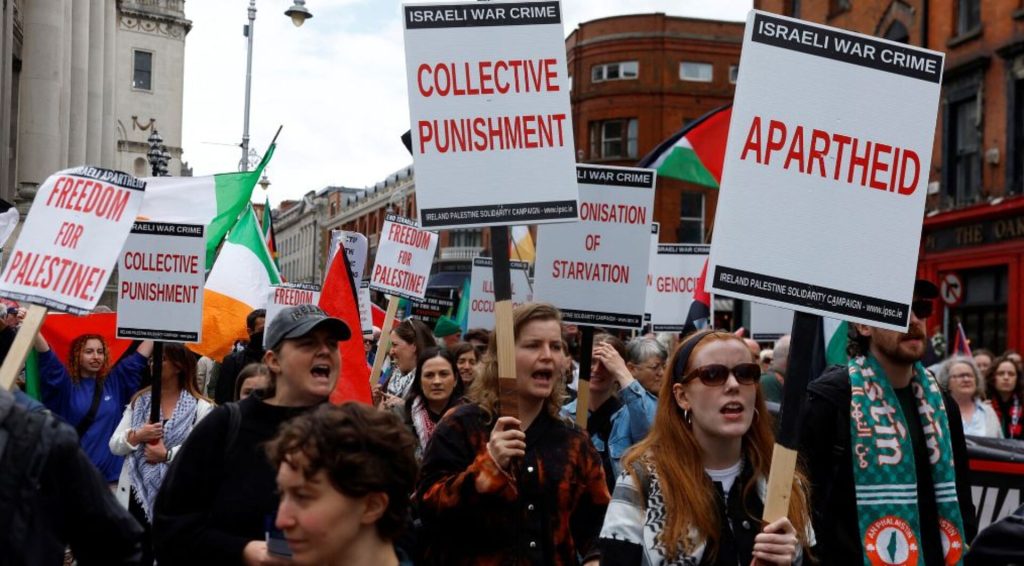
Dutch Foreign Minister Caspar Veldkamp resigns after failing to secure sanctions against Israel over Gaza atrocities. Earlier this month, Slovenia joined Spain and Belgium in imposing an arms embargo on Israel. Germany followed suit, partially, halting the sale of weapons to Israel that could be used in Gaza “until further notice”. The Netherlands has also imposed a partial ban on parts for Israeli fighter jets, while Italy suspended all new military exports to Israel in October. But it is the recent resignation of Dutch Foreign Minister Caspar Veldkamp, after his government failed to agree to sanctions against Israel, that raises questions: Will this one action trigger a broader political fallout across the 27-nation bloc? Presenter: Adrian Finighan Guests: Mpanzu Bamenga – member of the Dutch Parliament and human rights lawyer Ori Goldberg – political commentator and author Rene Wildangel – Middle East analyst and former foreign policy adviser to the German Parliament. Adblock test (Why?)
US National Guard troops begin carrying weapons in Washington, DC

The military said some troops are now carrying guns as Trump claims there is now ‘no crime’ in the US capital. National Guard troops patrolling the United States capital at the direction of President Donald Trump have started carrying firearms, the military said on Sunday. “Starting the late evening of August 24, 2025, [Joint Task Force-DC] service members began carrying their service-issued weapon,” the Joint Task Force-DC said in a statement. The troops are only authorised to use force “as a last resort and solely in response to an imminent threat of death or serious bodily harm”, the statement said. Unnamed officials told the Reuters news agency that the National Guard would either carry M17 pistols or M4 rifles. The announcement came as Trump claimed, without evidence, on Sunday that there is “NO CRIME AND NO MURDER IN DC!”, one week after he deployed troops there. In the same post on Truth Social, Trump said he might “send in the ‘troops’” to neighbouring Baltimore, which he described as “out of control” and “crime-ridden”. Responding to an invitation from Maryland Governor Wes Moore to visit Baltimore and walk its streets, Trump said: “I would much prefer that he clean up this Crime disaster before I go there for a ‘walk’.” However, according to the Baltimore police department, there was a double-digit reduction in gun violence in July compared with the previous year. The city has had 84 homicides so far this year – the fewest in more than 50 years, according to Baltimore Mayor Brandon Scott. In Washington, DC, which has a population of just more than 700,000 people, thousands of National Guard and federal law enforcement officers are now patrolling the streets. Advertisement The National Guard is a part-time force of reserve soldiers, which, according to the US Army, can be called on to respond to domestic emergencies, overseas combat missions and “counter-drug efforts”. People protest against Trump’s use of federal law enforcement and National Guard troops in the city during a rally along the U-Street corridor in northwest Washington, DC, on Saturday [Jose Luis Magana/AP Photo] Their presence in the national capital, along with federal law enforcement officers, has been met by protests, as well as fear and confusion from residents. At Trump’s request, some Republican governors have sent hundreds of National Guard troops to Washington, DC, which the president has depicted as being in the grip of a crime wave, although official data shows crime is down in the city. Since Washington, DC, is not a state, the president has the power to take over policing in the capital for up to 30 days. Many residents have long advocated for the district to become a state. However, Democrats did not further pursue efforts to make it a state after passing a bill in favour of it through the then-Democrat-controlled House of Representatives in 2020. Meanwhile, JB Pritzker, the Democratic governor of Illinois, on Sunday rejected Trump’s push to send troops into Chicago. “Donald Trump is attempting to manufacture a crisis, politicise Americans who serve in uniform, and continue abusing his power to distract from the pain he is causing working families,” Pritzker said in a statement. Adblock test (Why?)

